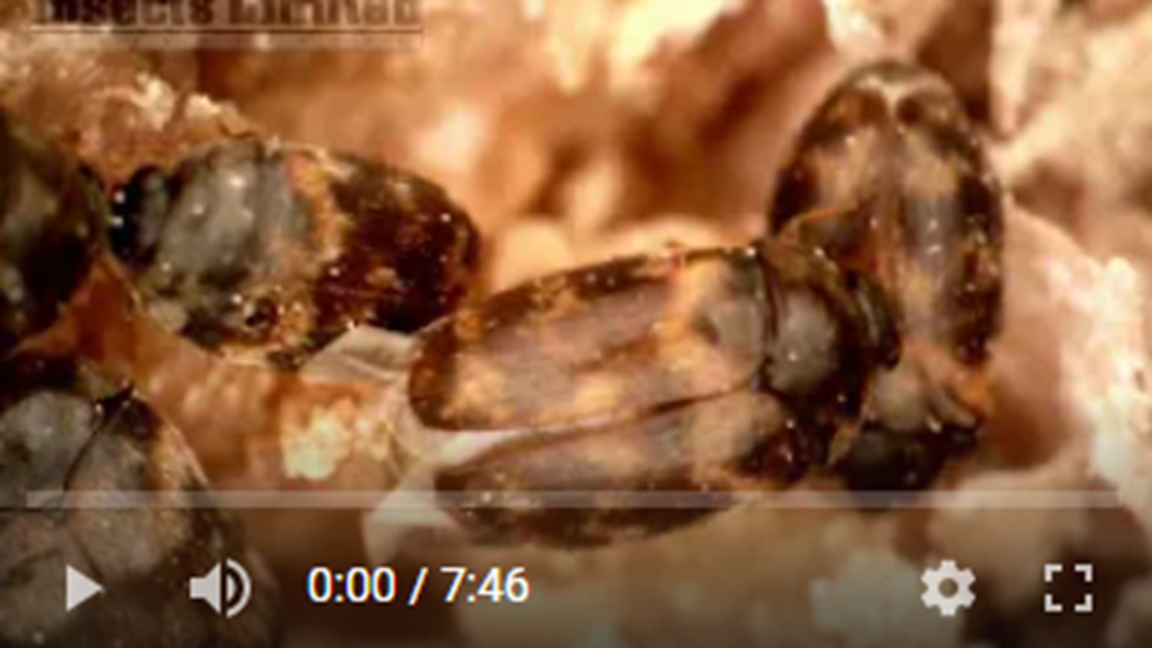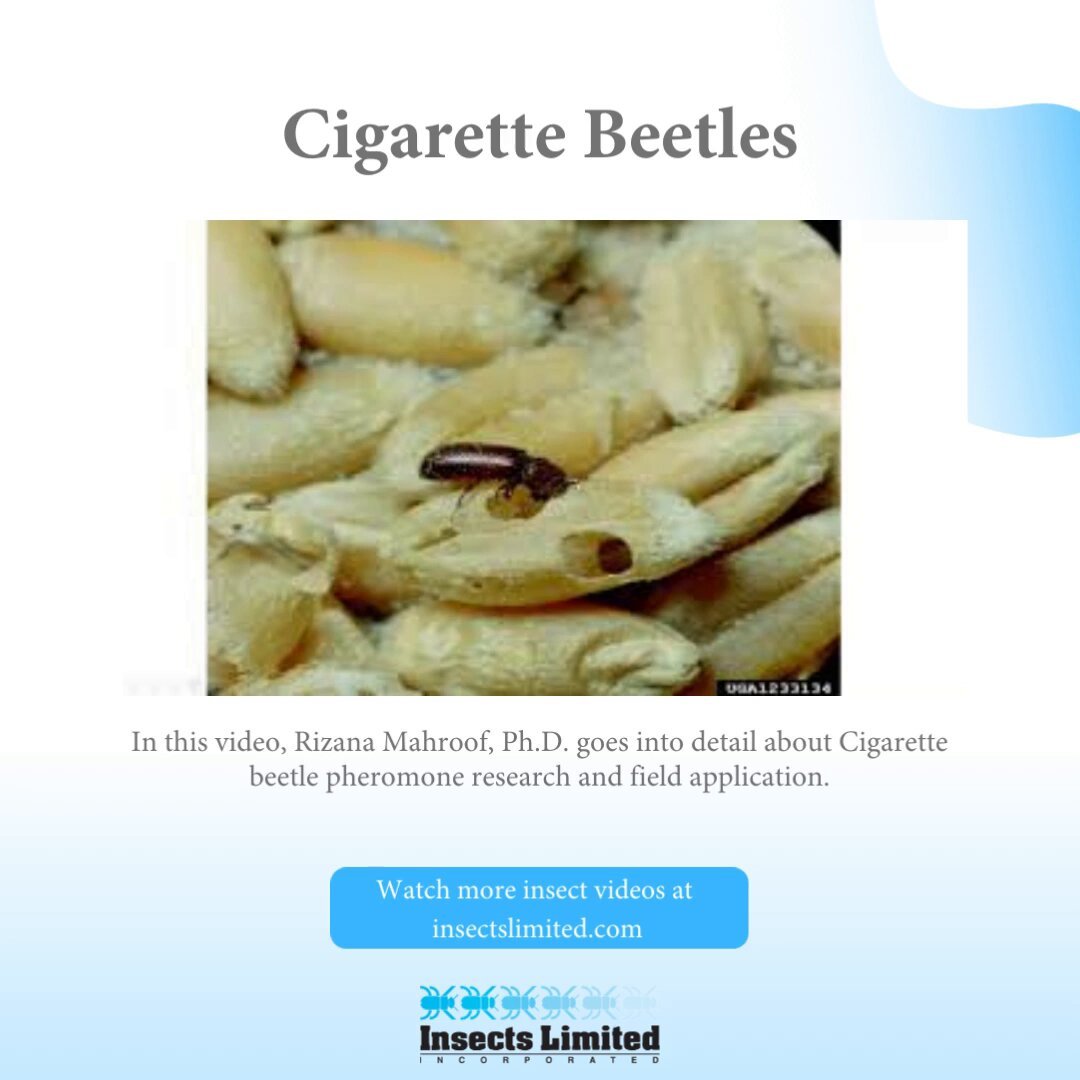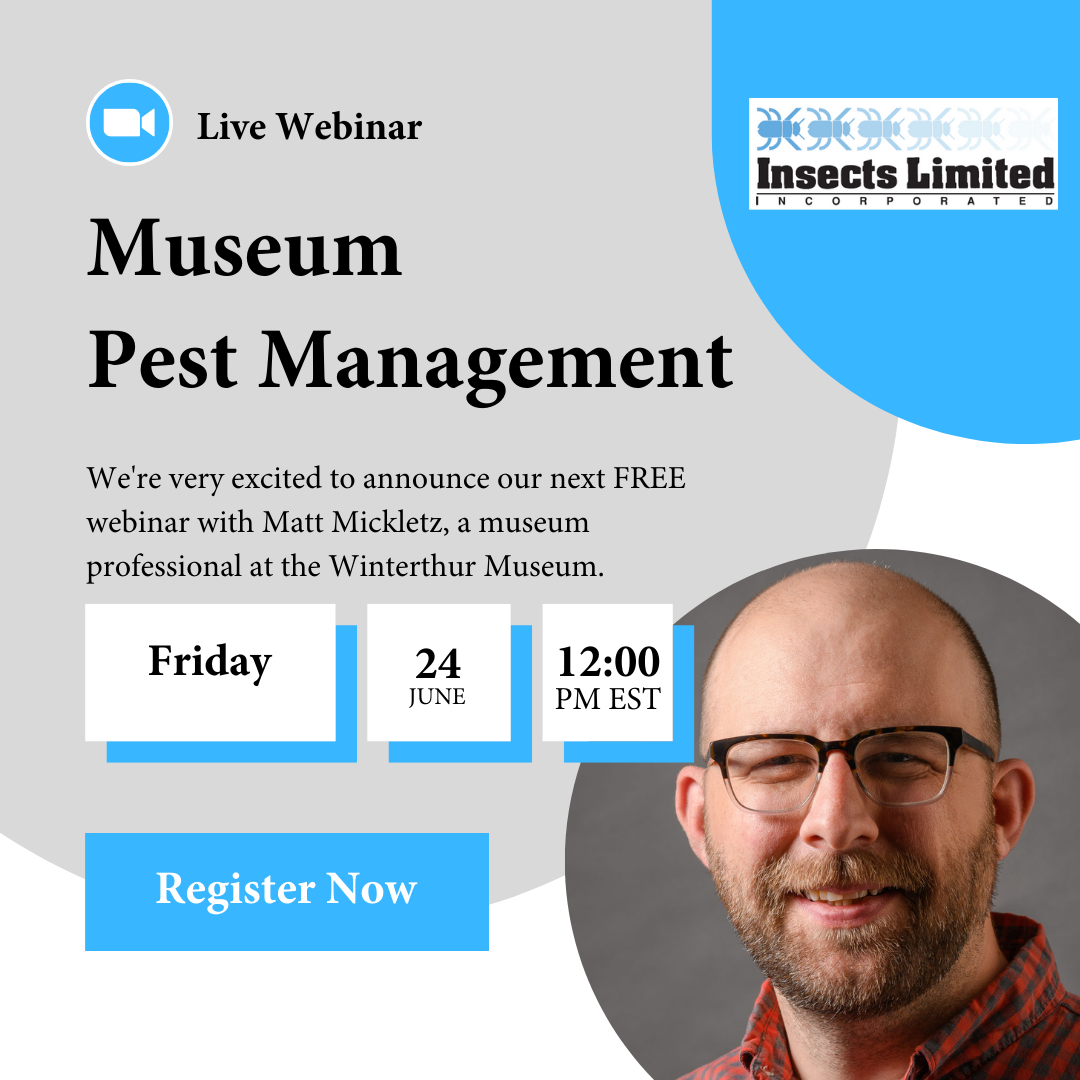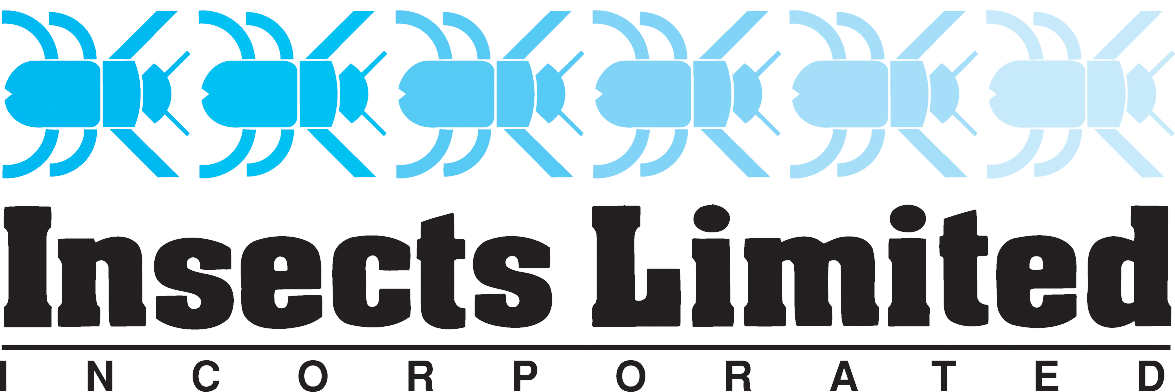
Watch: Complete Lifecycle of the Fruit Fly
Fruit flies progress from egg, through several larval instars, to pupa and then to adult in as little as 10 days. Males initiate courtship rituals after picking up short-range pheromones from females. Adult fruit flies can live up to 40 days.

The Red-Legged Ham Beetle, No friend of hams, and even worse friend of pet food
Red-legged ham beetle (RLHB for short) is about a quarter of an inch long, and has iridescent green wings, and dark orange legs. The adults of these insects are quick on their feet as well as very capable fliers. Effective flight is a necessity when scouting out ephemeral food sources like dead animals. What’s more, these insects are also good competitors of other insect larvae.

Product of the Month - GreenWay Fruit Fly Kit (12 bottles) (IL-1520)
The GreenWay Fruit Fly Kit (IL-1520-12) features the Insect Limited’s custom attractant for common fruit flies. It has been designed to capture red-eyed fruit flies but will also capture dark-eyed fruit flies.

Insect of the Month: Fruit Fly (Drosophila melanogaster)
Fruit flies feed primarily on moist, decaying, organic food items including fruits, vegetables and other fermenting liquids.
Fruit fly infestations can be identified by numerous adult insects flying around a food source or from the maggots infesting decaying food. In heavy fruit fly infestations, pupae can be found some distance from the food source when the larvae migrate away to find a dry, dark, and safe place to pupate.

Watch: Red-Legged Ham Beetle Biology and Lifecycle
Following the theme this month in the video featured below, entomologist Patrick Kelley discusses the detailed life cycle of the warehouse beetle from egg to adult.

Product of the Month - Red-Legged Ham Beetle Kit (IL-660)
Red-Legged Ham Beetle kits feature Insect Limited’s signature pheromone lures that use a pheromone mixed into a food attractant to draw in Red-Legged Ham Beetle, Necrobia rufipes over a 3-month period.

Insect of the Month: Red-Legged Ham Beetle (Necrobia rufipes)
Signs of Red-Legged Ham Beetle infestation are white silken cocoons on infested food items, cracks/crevices, and fibrous or furry textiles such as meaty dog treats, tennis balls, and wooden furniture. Red-legged ham beetles eat many meat based products, similar in moisture to beef jerky. Click to view..

Watch: Complete Lifecycle of the Warehouse Beetle
Following the theme this month in the video featured below, entomologist Patrick Kelley discusses the detailed life cycle of the warehouse beetle from egg to adult.

Stored Product Pests in the Food Distribution/Food Warehouse Setting
While a lot of focus is given to pest prevention and control in the production world, I want to move on down the chain of custody to warehousing and distribution. There are a multitude of ways stored product pests and their issues arise in this setting. Warehouses are high volume, high traffic hubs for products that come from all over the world. They can house a vast variety of items. This makes an integrated pest management system very complex and involved.

Product of the Month - PTL Multi-Species Kit (IL-408-10)
PTL represents the Plodia/Trogoderma/Lasioderma insects. The PTL Multi-Species Kit (IL-408-10) features the Insect Limited’s signature pheromone Bullet Lures™ that attract the most common pests of dried goods: Indian Meal Moth (Plodia interpunctella), Mediterranean Flour Moths (Ephestia kuehniella), Almond Moth (Ephestia cautella), Tobacco Moths (Ephestia elutella) and other food moth species; Trogoderma food beetles such as the Warehouse beetle, (Trogoderma variabile), Khapra beetle, (Trogoderma granarium) as well as (Trogoderma glabrum) and (Trogoderma inclusum); and also the Cigarette beetle (Lasioderma serricorne) species with a controlled release of pheromone over 3 months.

It’s the Damp Life for Me - Notorious bugs found in high moisture environments
It is amazing to me that, excluding the oceans, insects and arthropods inhabit nearly every environment that we have on earth. This includes the icy conditions on some of the highest mountain peaks, and some of the hottest and driest desert conditions around the globe.

Insect of the Month: Warehouse Beetle (Trogoderma Variable)
Warehouse beetles occur in all life stages in warm buildings, throughout the year with two or three generations occurring each year. Females mate within one day of emerging from the pupa. Five to sixty eggs are deposited near a food site. Larvae will molt 5 or 6 times before pupating.

Watch: Cigarette Beetle Pheromone Research and Field Application
Following the theme this month, in this video, Rizana Mahroof, Ph.D. goes into detail about Cigarette beetle pheromone research and field application.

Case Study: Cigarette Beetle
Why Insects Limited customers have seen success with our products when monitoring and targeting Cigarette Beetle

Product of the Month - All Beetle Trap Kit with RTU Gel Cartridge
Working closely with the pest control industry, Insects Limited recognized pest control operators and residential customers alike needed a Ready-To-Use (RTU) device to monitor for beetles that could fit in areas suspected of insect infestation without taking much space.

Insect of the Month: Cigarette Beetle (Lasioderma serricorne)
Packages and food products infested with cigarette beetles usually have shot holes where adults have emerged from pupation. Adults and larvae cause damage. Adults are excellent fliers and are attracted to lights. These beetles are commonly found in tobacco and other processed foods such as spices, flour, meal, and dog food, but can also attack horn, wool, hair, hide, pharmaceuticals and even book bindings. It is a common household pest.

Lizards May Help Protect People from Lyme Disease
Lyme disease is caused by the bacterium, Borrelia burgdorferi, and is the most common vector-bone disease infecting 476,000 people in the United States each year.

Plumes: How Pheromones Travel
Pheromone plumes are an intriguing and complex part of nature. Knowing a bit more about them gives us a lot of respect for how amazing insect communication can be and it also helps us become better at setting up trap monitoring programs and providing integrated pest management.

Insects Limited's Free Webinar Series Continues: Museum Pest Management
Insects Limited's world-class education programs share the most recent, cutting-edge investigations into pest biology, pheromones, and trapping systems presented by researchers and field experts from around the globe.

The Top 5 Fabric and Museum Insects
Up to 54% of museums and historic homes have reported damage from insects. Textiles, animal hides, taxidermy, wood works, natural fibers (like wool and cotton), books, and paintings all contain material that insects can exploit and do irreversible damage to.
